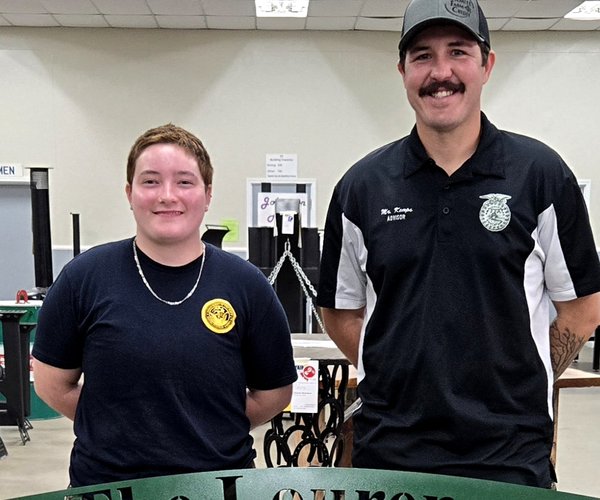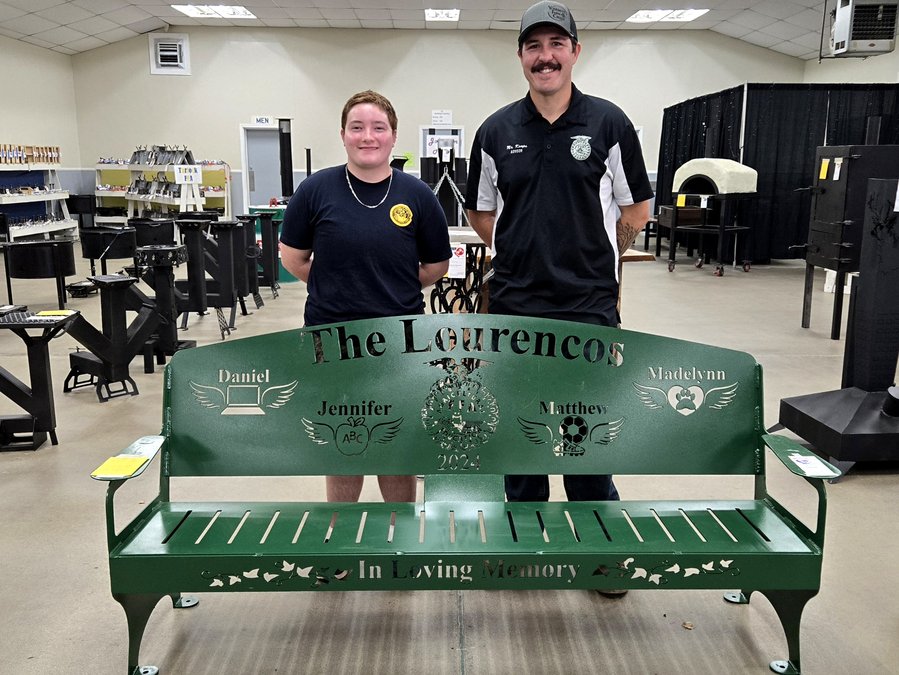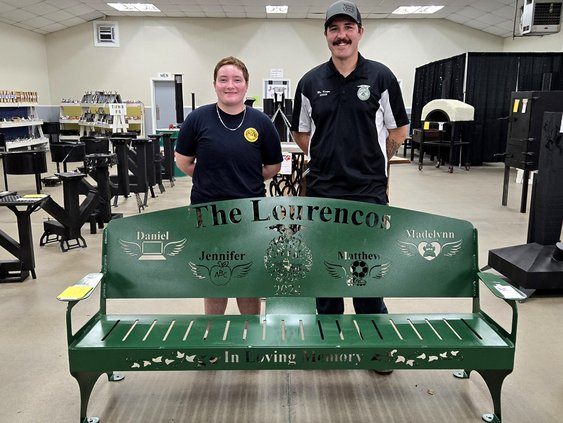When two burglars lit a match and set the Carnegie Arts Center ablaze on a cold November night in 2005, they likely had no idea of the political firestorm they were launching.
After the flames were doused, a unifying cry came out from the community that the Carnegie Arts Center would one day rise like a phoenix from the ashes. There was never a doubt that the Carnegie would once again be a part of downtown Turlock’s cityscape.
But the intervening years have brought forth a new City Council with new priorities. Coupled with a collapsing economy, the movement to rebuild the Carnegie Arts Center found itself on more shakier grounds than the burned out brick shell left standing on Broadway.
Despite setbacks of the past, the push for a new Carnegie Arts Center cleared two major hurdles this week on its path to becoming a reality. First, the construction bids on the project came in well below the estimate. Then, the City Council voted unanimously to earmark Redevelopment Agency funds toward the rebuilding of the Carnegie, though it came with a caveat. Some other entity or collaboration of groups has to prove to the City Council that they can take on the day-to-day and long-term operations and expenses of running the Carnegie.
“There was much to take away from that meeting that was positive,” said Patricia O’Donnell, the president of the Carnegie Arts Center Foundation, Turlock. “We are on the right track and I’m very confident that this will all be hammered out and we will be able to move forward soon.”
The City Council approved an RDA budget of $27.8 million on Tuesday. The funds are drawn from two sources — bond sales, which has $8.9 million in funds, and tax increments, which has $18.9 million in its coffers. By law, 20 percent of the redevelopment funds have to be used to increase, improve, or preserve affordable housing in the area for low to moderate income people and families. Funding is also given to school districts and other government institutions. The money that is left over is what can be used for redevelopment projects. The agency had to create a priority list because of the limited funds available and because for the foreseeable future all new bonds will go towards paying for the new public safety facility.
Redevelopment funds can only be used in specific areas that fall within the state guidelines. The area primarily has to be urbanized and contain blight and no more than 20 percent can be vacant. Blight can be physical, like dilapidated buildings, or can be economic, like depreciated property values or higher than average crime. The Carnegie Arts Center hits almost every requirement for RDA funding.
The City Council voted to set aside $4 million of the tax increment budget of the RDA funds to use in the rebuilding of the Carnegie. The City has identified $7.7 million as the cost of rebuilding the Carnegie. In addition to the $4 million, there is $907,000 from the insurance settlement and $600,000 in donations that have been set aside for the construction. The rest of the funding would come from future year’s RDA budgets.
However, before awarding any construction bids, the majority of the City Council said they want to see a business plan that maps out how the operation and maintenance of the facility will be maintained without any financial resources coming from the city.
“I’m a supporter of the concept, but as a representative of the city, I have to require that they do it right,” said Councilman Ted Howze, who has expressed that he wants to move forward with the Carnegie project with caution. “We can’t afford mistakes anymore. It’s my job to point out the pitfalls. If this is going to happen, then they’re going to be prepared.”
“The City cannot defer the costs of the Carnegie. Not in this climate where we just had to lay-off people,” said Councilwoman Amy Bublak. “It’s not about having a like or dislike of the arts,” she said. “It’s about the obstacles that have come up and finding solutions to them.”
“The climate is what the climate is,” O’Donnell said. “We have a new City Council and they have brought new concerns to the table, but I’m confident we will find a scenario that is acceptable to everyone.”
The Carnegie Arts Center has been a part of the community since 1916 when the Carnegie Corporation donated $9,200 to construct a city library. From 1917 to 1968, Turlockers trucked up and down the steps of the classic brick building, laden with books, while children enjoyed games and story hours down in the basement. After the library moved in 1968 the Carnegie was being used as a recreation and community center until 1982, when it was turned into a city arts center. By 1996 the building had fallen into some disrepair and efforts to revitalize it began in earnest. In 2005 the project was underway when a fire set by two burglars, who had broken in to steal the copper fixtures, brought it all to a crashing halt.
“So many people hold a piece of the Carnegie in their memories of Turlock,” said Councilwoman Mary Jackson, who has been a longtime and vocal proponent of the Carnegie. “Rebuilding the Carnegie is a win-win situation for everyone.”
Soon after the fire, Mayor Curt Andre formed a Carnegie committee to look at all the options and “determine the fate of the Carnegie,” O’Donnell said. Out of the rubble the foundation of Carnegie supporters started envisioning a new Carnegie Arts Center that would become the “jewel of the downtown,” O’Donnell said. That initial committee has spawned other committees that have taken the Carnegie through a multitude of plans and processes that have brought it to where it is now — waiting for the green light.
Currently the foundation is in discussions with the city and with other groups to come up with a couple of different options to bring back to the City Council that will detail out how the Carnegie Arts Center can be operated and maintained. Councilwoman Jackson said she has every confidence that the foundation will succeed in these efforts.
“If we let them, they will make this work,” Jackson said.
Councilwoman Bublak has spearheaded an effort to have the Carnegie also be used as a teen/youth center that would serve all of Turlock, but in particular the Westside, where the Carnegie is located, which she points out would open up grant opportunities for the Carnegie.
Ultimately, the Carnegie foundation envisions a center that will incorporate art shows, classes, performances, and various types of community gatherings.
“It will be a vibrant center that is welcoming to everyone,” O’Donnell said. “It will have a wide array of options that engage all interests of the community. But in the end, it’s going to take all of us coming together to make it happen.”
To contact Sabra Stafford, e-mail sstafford@turlockjournal.com or call 634-9141 ext. 2002.
After the flames were doused, a unifying cry came out from the community that the Carnegie Arts Center would one day rise like a phoenix from the ashes. There was never a doubt that the Carnegie would once again be a part of downtown Turlock’s cityscape.
But the intervening years have brought forth a new City Council with new priorities. Coupled with a collapsing economy, the movement to rebuild the Carnegie Arts Center found itself on more shakier grounds than the burned out brick shell left standing on Broadway.
Despite setbacks of the past, the push for a new Carnegie Arts Center cleared two major hurdles this week on its path to becoming a reality. First, the construction bids on the project came in well below the estimate. Then, the City Council voted unanimously to earmark Redevelopment Agency funds toward the rebuilding of the Carnegie, though it came with a caveat. Some other entity or collaboration of groups has to prove to the City Council that they can take on the day-to-day and long-term operations and expenses of running the Carnegie.
“There was much to take away from that meeting that was positive,” said Patricia O’Donnell, the president of the Carnegie Arts Center Foundation, Turlock. “We are on the right track and I’m very confident that this will all be hammered out and we will be able to move forward soon.”
The City Council approved an RDA budget of $27.8 million on Tuesday. The funds are drawn from two sources — bond sales, which has $8.9 million in funds, and tax increments, which has $18.9 million in its coffers. By law, 20 percent of the redevelopment funds have to be used to increase, improve, or preserve affordable housing in the area for low to moderate income people and families. Funding is also given to school districts and other government institutions. The money that is left over is what can be used for redevelopment projects. The agency had to create a priority list because of the limited funds available and because for the foreseeable future all new bonds will go towards paying for the new public safety facility.
Redevelopment funds can only be used in specific areas that fall within the state guidelines. The area primarily has to be urbanized and contain blight and no more than 20 percent can be vacant. Blight can be physical, like dilapidated buildings, or can be economic, like depreciated property values or higher than average crime. The Carnegie Arts Center hits almost every requirement for RDA funding.
The City Council voted to set aside $4 million of the tax increment budget of the RDA funds to use in the rebuilding of the Carnegie. The City has identified $7.7 million as the cost of rebuilding the Carnegie. In addition to the $4 million, there is $907,000 from the insurance settlement and $600,000 in donations that have been set aside for the construction. The rest of the funding would come from future year’s RDA budgets.
However, before awarding any construction bids, the majority of the City Council said they want to see a business plan that maps out how the operation and maintenance of the facility will be maintained without any financial resources coming from the city.
“I’m a supporter of the concept, but as a representative of the city, I have to require that they do it right,” said Councilman Ted Howze, who has expressed that he wants to move forward with the Carnegie project with caution. “We can’t afford mistakes anymore. It’s my job to point out the pitfalls. If this is going to happen, then they’re going to be prepared.”
“The City cannot defer the costs of the Carnegie. Not in this climate where we just had to lay-off people,” said Councilwoman Amy Bublak. “It’s not about having a like or dislike of the arts,” she said. “It’s about the obstacles that have come up and finding solutions to them.”
“The climate is what the climate is,” O’Donnell said. “We have a new City Council and they have brought new concerns to the table, but I’m confident we will find a scenario that is acceptable to everyone.”
The Carnegie Arts Center has been a part of the community since 1916 when the Carnegie Corporation donated $9,200 to construct a city library. From 1917 to 1968, Turlockers trucked up and down the steps of the classic brick building, laden with books, while children enjoyed games and story hours down in the basement. After the library moved in 1968 the Carnegie was being used as a recreation and community center until 1982, when it was turned into a city arts center. By 1996 the building had fallen into some disrepair and efforts to revitalize it began in earnest. In 2005 the project was underway when a fire set by two burglars, who had broken in to steal the copper fixtures, brought it all to a crashing halt.
“So many people hold a piece of the Carnegie in their memories of Turlock,” said Councilwoman Mary Jackson, who has been a longtime and vocal proponent of the Carnegie. “Rebuilding the Carnegie is a win-win situation for everyone.”
Soon after the fire, Mayor Curt Andre formed a Carnegie committee to look at all the options and “determine the fate of the Carnegie,” O’Donnell said. Out of the rubble the foundation of Carnegie supporters started envisioning a new Carnegie Arts Center that would become the “jewel of the downtown,” O’Donnell said. That initial committee has spawned other committees that have taken the Carnegie through a multitude of plans and processes that have brought it to where it is now — waiting for the green light.
Currently the foundation is in discussions with the city and with other groups to come up with a couple of different options to bring back to the City Council that will detail out how the Carnegie Arts Center can be operated and maintained. Councilwoman Jackson said she has every confidence that the foundation will succeed in these efforts.
“If we let them, they will make this work,” Jackson said.
Councilwoman Bublak has spearheaded an effort to have the Carnegie also be used as a teen/youth center that would serve all of Turlock, but in particular the Westside, where the Carnegie is located, which she points out would open up grant opportunities for the Carnegie.
Ultimately, the Carnegie foundation envisions a center that will incorporate art shows, classes, performances, and various types of community gatherings.
“It will be a vibrant center that is welcoming to everyone,” O’Donnell said. “It will have a wide array of options that engage all interests of the community. But in the end, it’s going to take all of us coming together to make it happen.”
To contact Sabra Stafford, e-mail sstafford@turlockjournal.com or call 634-9141 ext. 2002.









